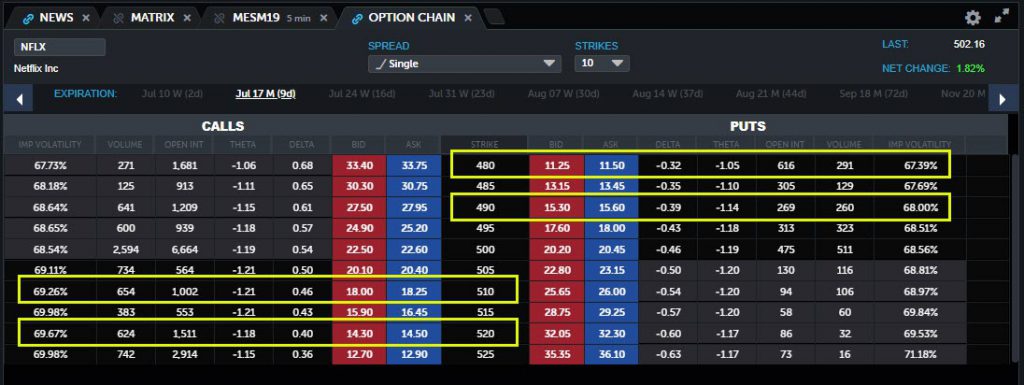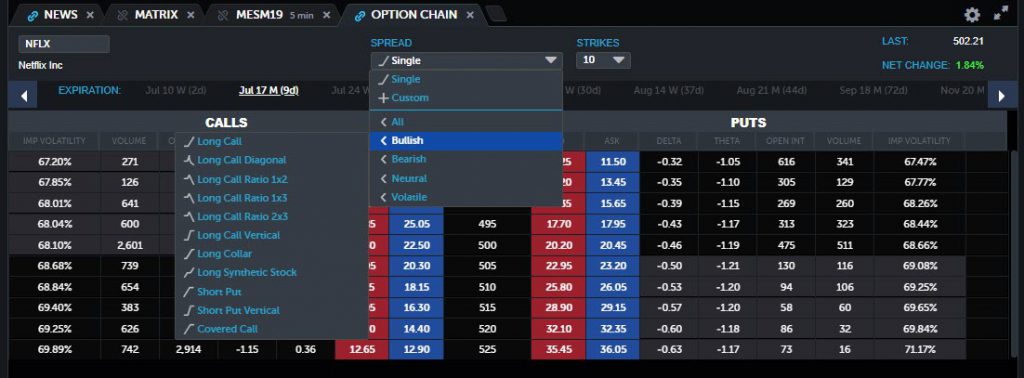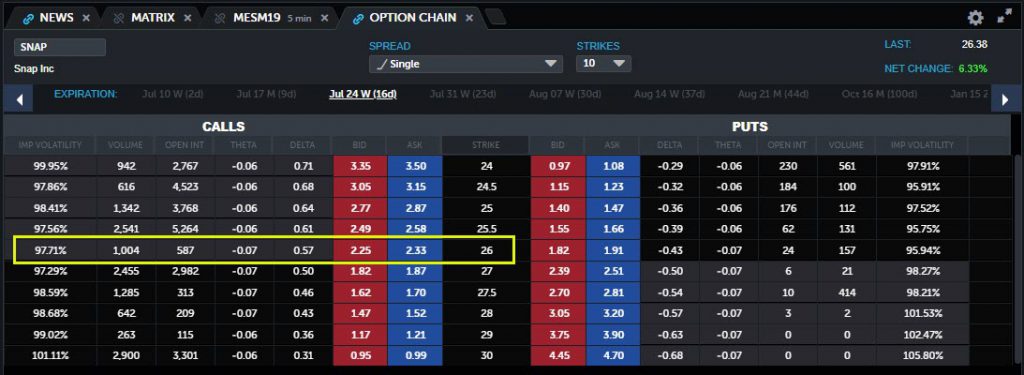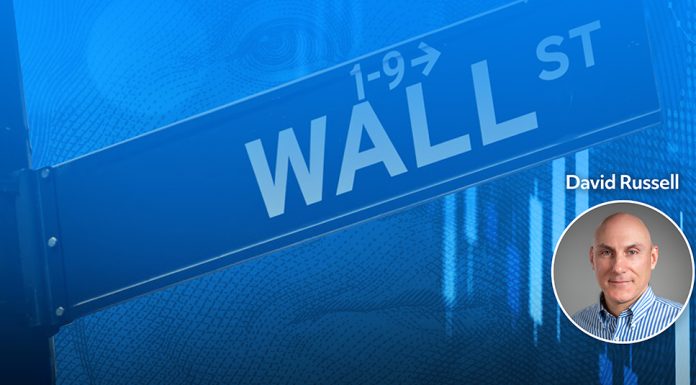Second-quarter earnings season begins next week against one of the most uncertain backdrops ever. It’s a good time to review some options strategies to manage risk in the age of coronavirus.
Here are some options trading strategies we’ll consider today:
- Long calls
- Vertical call spreads
- Bearish put spreads
- Covered calls
First, a quick review if you’re new to options. Long calls fix the price where a stock can be purchased. They typically gain value when shares rally.
Long puts are just the opposite, fixing the level where investors can sell a stock. They usually gain value when prices decline. Traders can mix these instruments in certain ways to do more with your money as we’ll show below.
Long Calls Can Replace Stock
One way traders can use options is simply buying calls instead of shares.
Say you’re bullish on Neflix (NFLX) but don’t want to pay the $502.78 share price. You might worry about a disappointing earnings report or bearish analyst notes before the announcement next Thursday, July 16.

Instead, you could purchase the 17-July 510 calls for $18.25. A single contract would cost $1,825, less than buying four shares of NFLX. However, it would behave like 46 shares because the options delta is 0.46.
This approach could profit if NFLX keeps climbing into the report but lose money if the shares decline.
Time decay is another risk because options usually lose value after big events like earnings. Traders may want to hold the position in the short-term if they expect a rally into the news but sell before it’s released.
Vertical Call Spreads Can Limit Cost
Traders wanting to hold their position through the report may want to consider vertical call spreads.
Say you think NFLX will jump after its earnings report, rather than climb beforehand. You could:
- Buy the 17-July 510 calls for $18.25
- Sell the 17-July 520 calls for $14.30
That would translate into a cost of $3.95. The position would be worth $10 if NFLX closes at or above $520 on expiration. That could be a 153 percent gain from the stock moving less than 4 percent. The position will expire worthless if the streaming-video stock remains under $510.

Vertical spreads may seem complicated because they involve more than one contract. However TradeStation’s Web trading platform makes it easy to place multiple-leg orders. Just click on the Spread menu on the Options Chain tool and look under “Bullish.”
Bearish Put Spreads
The same options trading strategy can work to the downside when traders use puts instead of calls.
There are two possible cases. An investor might own NFLX shares. He or she could be bullish on the stock and hope it will rally on earnings. But they still want to guard against a selloff. A vertical spread with puts can be an inexpensive way to hedge downside risk while still having upside exposure.
Alternately, a speculator may believe NFLX is overvalued after surging 73 percent from its March low. They could also use a bearish put spread to position for a drop. This can be safer than short selling the stock, which has infinite risk.
Here’s an example of a potential put spread in NFLX. (Go to “bearish” under the Spread menu on the Options Chain tool.)
- Buy the 17-July 490 puts for $15.60
- Sell the 17-July 480 puts for $11.25
- Net cost: $4.35
- Potential profit: $5.65, or 130 percent, from NFLX dropping less than 5 percent to $480.
- The put spread will expire worthless if the shares remain above $490.
Covered Calls Help Manage Risk
Covered calls are the last options trading strategy covered in this article about risk management during earnings season.
This requires you own at least 100 shares of the company in question. Because NFLX is so expensive, let’s consider another like Snap (SNAP). The social-media company is scheduled to announce results after the closing bell on Tuesday, July 21.
Say you have 100 shares of SNAP and have ridden the rally from its last earnings report on April 21. You could potentially sell one contact of the 24-July 26 calls for $2.25. The stock closed at $26.50 yesterday.

This options trading strategy would immediately pay you $225. It would then obligate you to sell you shares for $26 on or before April 24. Including the credit received today, your actual proceeds would be $28.25 per share.
Covered calls let you isolate the time value in the options and profit from it. This can also provide a hedge because the extra money collected by selling the calls can offset a drop in the share price.
Pros and Cons of Covered Calls
There are two risks to covered calls. First, you have to hold the stock as long as you’re short the calls. That can expose you to declines in the share price.
Second, profits to the upside are capped. In the case above, you’ll never make more than $28.25 — even if SNAP jumps to $50 after reporting its quarterly numbers.
In general, traders may want to consider using covered calls when they’re modestly bullish but think a stock is due for a pause. Their main benefit is that they’re a simple way to profit from time decay and manage some risk.






















